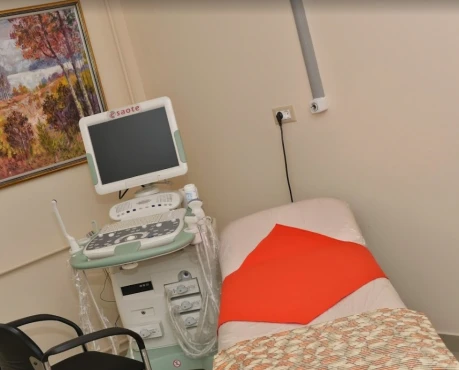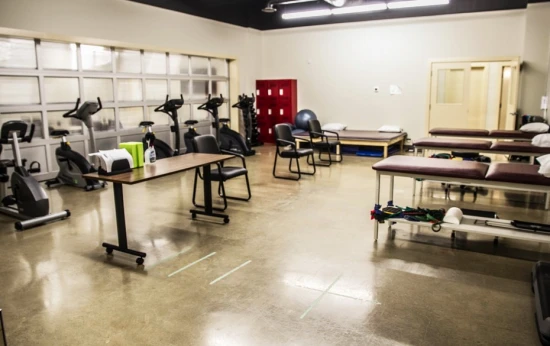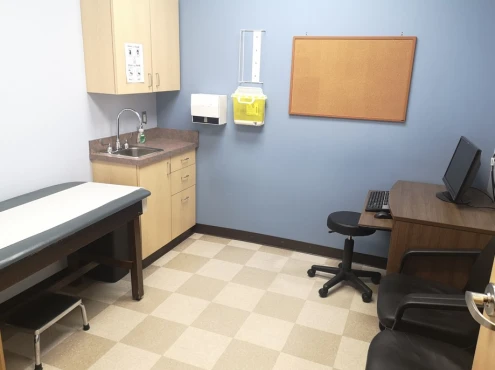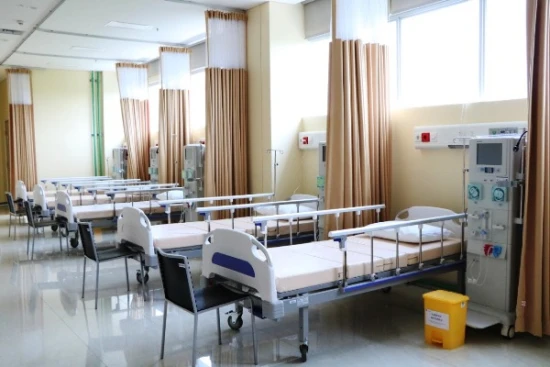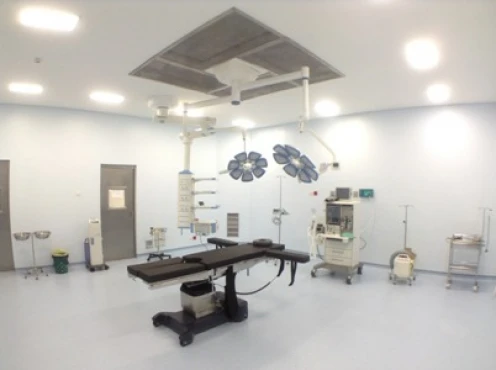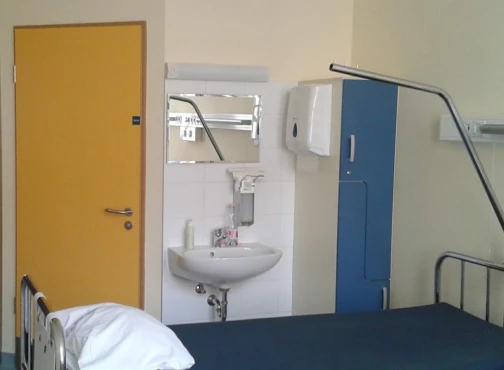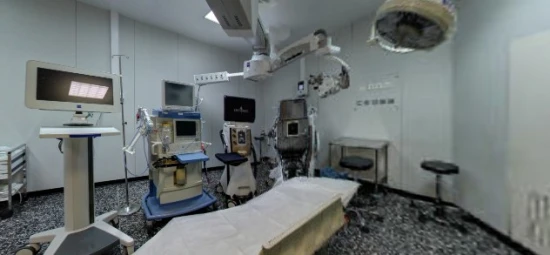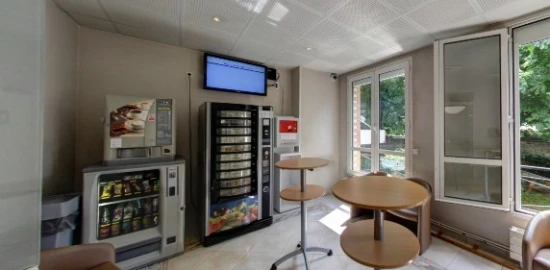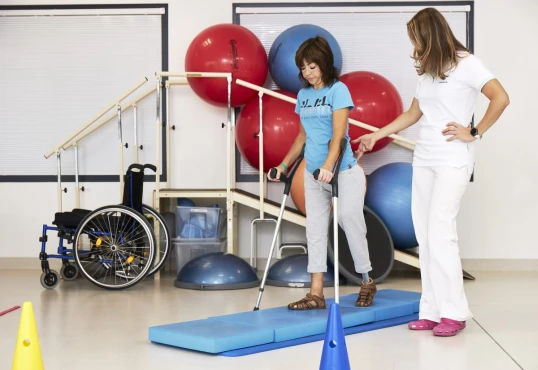Definition
Acute (myofascial) compartment syndrome is a pathological condition that is provoked by increased pressure in the fascial case, accompanied by ischemia and tissue necrosis due to blood supply disorders. It is manifested by a feeling of pressure, intense pain, pallor of the skin, weakening of the pulsation of peripheral arteries, and impaired sensation and movement in the affected limb. It is diagnosed based on complaints, anamnesis, examination data, and measurement of subfascial pressure. Treatment includes eliminating compression and prescription drugs to improve blood circulation and rheological properties. If indicated, fasciotomy is performed.
General information
This condition belongs to the category of polyetiological and can be diagnosed in trauma, rapidly growing tumors, and inflammatory processes. The exact prevalence is unknown; it is assumed that mildly expressed forms of the syndrome in traumatic injuries often remain unrecognized.
Reasons
The immediate cause of myofascial compartment syndrome is compression of blood vessels and impaired blood supply to tissues due to increased local pressure in the confined space of the fascial case. Due to anatomical peculiarities (robust fascia, space limitation by other structures), the anterior muscle-fascial spaces of the forearm and deep posterior and anterior spaces of the lower leg are most often affected. Less frequently affected are the thigh, shoulder, buttock, and back muscles. The main etiologic factors are considered to be:
- Traumatic injuries. Occupy the first place in terms of prevalence. Large posttraumatic hematomas, dislocations and fractures of tubular bones, circular burns, and positional compression of the limb can cause the syndrome. Sometimes, the provoking factor is the premature circulation of the plaster cast with increasing traumatic edema, excessive skeletal traction, and osteosynthesis of fractures.
- Late revascularization syndrome. Ischemic edema develops due to too long use of tourniquets during bleeding. A similar mechanism is observed in prolonged reconstructive interventions on arteries accompanied by forced disconnection of a certain vascular segment from the general blood flow.
- Inflammatory processes. Compartment syndrome is sometimes potentiated by acute myositis of various etiologies. Muscle inflammation can be detected in acute respiratory viral infections, influenza, and specific infectious diseases tuberculosis, syphilis, becomes a consequence of toxic-allergic reactions to parasitic infections, or manifests as septicemia.
- Neoplasms. In some patients, pathology is detected in rapidly growing tumors located in the thickness of the muscle or affecting nearby anatomical formations. In the latter case, the cause of edema is compression of vessels feeding the muscle, lymphatic flow disorders, and the reaction of surrounding tissues to the growth of neoplasia.
The literature describes cases when compartment syndrome affecting myofascial spaces developed after a snake bite, intraarterial, or intravenous injection of pressurized solutions. There is also a functional variant of the pathology—the so-called march syndrome, which occurs with a prolonged intensive load on the limb (walking transitions, practicing some sports), especially when using uncomfortably tight shoes. In renal dysfunction, the disease may be potentiated by renal edema.
Pathogenesis
A single mechanism of compartment syndrome formation, independent of the causes that caused it, has been established. Hematomas, ischemic tissue edema, external compression, and other factors increase interstitial pressure in the limited myofascial space. Usually, the pressure in the capillaries is about eight mmHg. When the interfascial pressure exceeds this indicator, gross blood circulation disorders occur in the capillary channel, and oxygen and nutrients stop flowing to the tissues.
Classification
In clinical practice, compartment syndrome is usually classified according to the degree of severity determined by clinical signs and intrafascial pressure measurements. If there is information about the time of pathology development, this approach allows us to make a relatively accurate preliminary assessment of the state of myofascial tissues and choose the optimal tactics for patient management. Three degrees of the condition are distinguished:
- Mild. The distal parts of the limb are warm, and arterial pulsation is detected. The difference between diastolic pressure and pressure in the fascia case is about 40 mmHg.
- Medium. The skin temperature on the affected side is decreased compared to the healthy arm or leg. Vascular pulsation is weakened. Finger sensitivity is impaired or lost. Interstitial pressure corresponds to diastolic pressure.
- Severe. Pulsation of the main arteries is absent, sensation of the distal parts of the limb is lost. Subfascial pressure exceeds diastolic pressure.
Symptoms
There is increasing pain and progressive edema of the limb. The intensity of the pain syndrome does not correspond to the severity of the underlying pathology. Non-narcotic analgesics do not control pain; they increase with palpation and squeezing of the area of injury and passive movements in the distal parts of the limb. The skin over the affected area is taut, pale, and in severe cases - cold. Myofascial tissues are compacted. Subsequently, pulsation on the peripheral arteries weakens and then disappears, the sensitivity of the limb is reduced or lost, and frictions are formed on the skin.
Diagnosis
Usually, patients are under the supervision of an [orthopedic traumatologist] for the underlying disease, and compartment syndrome is detected in the process of dynamic observation or diagnosed as a complication of trauma at the time of admission. With combined traumatic injuries, shock, and unconsciousness of the patient, diagnosis can be difficult. To clarify the diagnosis, the following methods are used:
- Physical examination. The circumstances of pathology development are generally apparent because they are caused by trauma, surgery, tight plaster cast, etc. Positional compression, prolonged tourniquet application, and some other causes require clarification of anamnesis.
- Measurement of subfascial pressure. This method confirms the presence of compartment syndrome and excludes other conditions based on objective indicators. The results are of particular value if the patient is unconscious. It is performed using special devices or a system consisting of a syringe and Riva-Rocci apparatus. Measurements are carried out at certain points; the indicators are compared with diastolic pressure. A difference of 40 mm Hg or less indicates local compression of tissues.
Phlebography is prescribed to differentiate this disease from phlebothrombosis; the procedure results in compartment syndrome, revealing the narrowing of deep veins. In addition, differential diagnosis is performed with myositis of clostridial and non-clostridial etiology.
Treatment of acute compartment syndrome
Treatment is carried out as an emergency in the Department of Traumatology and Orthopedics and can be conservative or surgical. Immediately upon treatment or detection of signs of pathology in a hospitalized patient, measures are taken to eliminate compression of the affected segment. In case of excessive traction, reduce the weight of the load; in the presence of a tight, soft, or plaster bandage, perform its dissection. The leg is placed in an elevated position on the Bohler splint. The following treatment methods are used:
- Drug therapy is indicated at the initial stages. Narcotic analgesics are administered to reduce the severity of pain syndrome. Vasodilators and drugs that improve the rheological properties of blood are prescribed to restore local blood flow. Loop diuretics are used to eliminate edema. When drawing up a plan of drug therapy, the reduced flow of drugs into the tissues due to impaired blood supply is taken into account.
- Decompression fasciotomy. Dissection of the fascia to rapidly reduce tissue pressure can be therapeutic or prophylactic. Prophylactic fasciotomy is performed before the onset of signs of disease in conditions that are naturally complicated by compartment syndrome (usually with delayed vascularization). In the case of late-onset treatment, due to the formation of necrotic foci in the muscle tissue, medications and organ-preserving surgical interventions become ineffective. The following is indicated: necrectomy. If extensive necrotic changes develop, amputation or disarticulation of the limb is indicated.
Prognosis and prevention
The prognosis of myofascial compartment syndrome is determined by the severity of the pathology and the time of compression of muscle tissues. In case of rapid relief of local pressure increase, the function of the affected segment is fully restored. If the increased pressure persists for a long time, the outcome is contracture due to the formation of areas of necrosis and subsequent scarring. The formation of extensive necrotic foci, requiring cutting off the limb, is rarely observed. Preventive measures include preventing traumatism, early treatment of injuries, compliance with the rules of plaster bandages and first aid for bleeding, and limiting the duration of operations on vessels.


